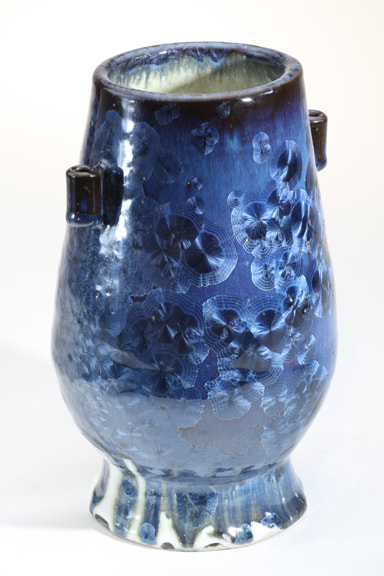|
CECI N’EST PAS UNE ASSIETTE (translation: "This is not a plate") The environmental costs of firing a piece to stoneware temperatures, as I do, are enormous. Therefore, if the work is fired this high, it must be justified - it must be something than cannot be made at a lower temperature, and beyond that, it must be very good. Each piece is a study of form, color and surface. With ceramics, there can also be a metaphor, with or without figurative devices. The divide between sculpture and object can become blurred. If my piece can be used for something, that is gratuitous, it makes the design and fabrication more challenging. While some of this work takes forms of traditional objects, this is a ruse. I am looking for beauty and the form is one of the elements. Peter Voulkos used to make holes and slashes in his plates, in part to keep people from thinking his work was "crafts," or "tableware," which command a much lower price than "art." Do I have to do that to get people to respect my work? It is more challenging to make a plate with artistic value, but also without functional flaws. For me, glaze can be among the most beautiful things in the world. A pot is a format for glaze. My glazes and design elements are inspired by Ancient Chinese Monochromes. My intention is to celebrate that legacy. The glazes are my original formulas, many of them following principles perfected during the Song dynasty. I graduated from the Design School at California Institute of the Arts in 1972 in Valencia, CA (B. F. A.) with a concentration in ceramics and a master’s degree (M. A.) in ceramics at New Mexico Highlands University the following year. My master’s project was on high-temperature copper red glaze. In the past several years I have reconnected with my former employer, Robert Weiss, and we have helped each other in our related but very different ceramic work. I invented the compositions of some of Robert's new crystalline glazes, and I composed a new white glaze for the insides of his pieces. I fired the crystalline glaze pieces on these pages in his kilns. Go to www.weissltd.com to see his work. Please scroll down for more photographs. Photographs on these pages are by Lenny Siegel, Robert Weiss, Rose Hodges and Michael Rosen. |





